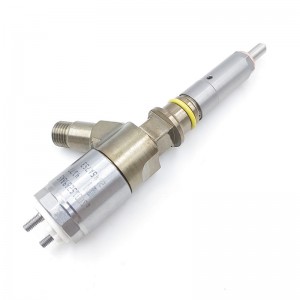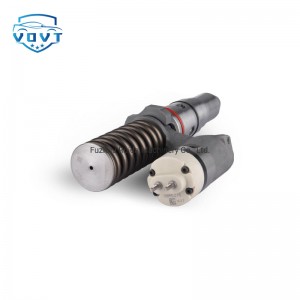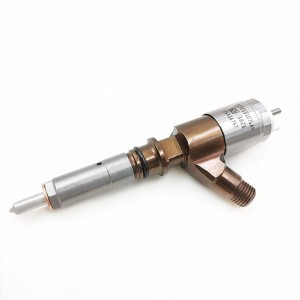New High Quality Diesel Injector 294-3005 10R-6163 359-4020 20R-1301 359-4030 20R-1306 For CAT C15E
Products Description
| Reference. Codes | C15E |
| Application | C15E |
| MOQ | 4PCS |
| Certification | ISO9001 |
| Place of Origin | China |
| Packaging | Neutral packing |
| Quality Control | 100% tested before shipment |
| Lead time | 7~10 working days |
| Payment | T/T, L/C, Paypal, Western Union, MoneyGram or as your requirement |
What factors should be considered when optimizing the flow characteristics of a fuel injector?
The optimization of the flow characteristics of the injector needs to comprehensively consider multiple factors such as engine operating conditions, fuel characteristics, and emission requirements to achieve comprehensive improvement of engine performance and effective control of emissions, as follows:
Engine operating conditions: Different engine operating conditions, such as idling, low speed, high speed, acceleration, deceleration, full load, etc., have different requirements for fuel injection quantity and injection timing. For example, a small and stable fuel flow is required at idle speed to maintain the lowest operating speed of the engine; a larger fuel flow is required at high speed and full load to provide sufficient power. When optimizing the flow characteristics, it is necessary to ensure that the injector can accurately provide the appropriate amount of fuel under various operating conditions to achieve good power performance, fuel economy and operating stability.
Fuel characteristics: The viscosity, density, volatility and other characteristics of the fuel will affect its flow and injection effect in the injector. Fuel with high viscosity has high flow resistance, which may lead to poor injection. It is necessary to adjust the injection pressure or nozzle size appropriately to ensure the flow rate. Fuels with different densities have different injection qualities at the same injection time and nozzle area. It is necessary to accurately control the injection time and pressure according to the fuel density to achieve accurate fuel supply. Fuels with good volatility are more likely to form a uniform mixture in the combustion chamber, but it may also be necessary to adjust the injection timing to avoid premature evaporation and uneven mixing.
Emission requirements: In order to meet increasingly stringent environmental regulations, the optimization of injector flow characteristics must consider reducing harmful gas emissions, such as nitrogen oxides (NOx), hydrocarbons (HC), carbon monoxide (CO) and particulate matter (PM). For example, by optimizing the injection timing and injection rate, the fuel and air are mixed more fully, achieving more complete combustion, thereby reducing CO and HC emissions; using multiple injection strategies, such as pre-injection and post-injection, can reduce combustion temperature, reduce NOx generation, and promote the oxidation of particulate matter, reducing PM emissions.
Injector structure: The internal structure of the injector, such as the number, diameter, shape, and needle valve design of the spray holes, directly determines the injection mode and flow characteristics of the fuel. Increasing the number of spray holes can make the fuel more evenly dispersed and improve the atomization effect, but it will increase the processing cost and complexity; the size of the spray hole diameter affects the injection speed and flow rate of the fuel. A smaller diameter is conducive to fuel atomization, but it is easy to clog; the opening and closing speed, lift and other parameters of the needle valve will also affect the timeliness and accuracy of the injection. When optimizing the flow characteristics, it is necessary to reasonably design and optimize the structure of the injector according to the specific requirements of the engine and the actual working conditions.
Intake conditions: The intake conditions of the engine, such as the intake volume, intake temperature and intake pressure, have an important influence on fuel injection. The intake volume determines the amount of air that can be mixed with the fuel, thereby affecting the combustion efficiency of the fuel and the performance of the engine. When optimizing the flow characteristics of the injector, the fuel injection volume should be adjusted in real time according to the changes in the intake volume to maintain a suitable air-fuel ratio. Changes in intake temperature and pressure affect the density and volume of air, and thus the mixing effect of fuel and air, which also needs to be considered in the optimization of flow characteristics, such as by adjusting the injection time and pressure to adapt to different intake conditions.
Cost and reliability: When optimizing the flow characteristics of the injector, cost factors need to be considered to ensure that the optimization measures are economically feasible. At the same time, the optimized injector should have high reliability and durability, be able to work stably throughout the service life of the engine, and reduce maintenance and replacement costs. This requires that when selecting optimization schemes and materials, the impact on the reliability of the injector should be comprehensively considered to avoid sacrificing reliability and cost-effectiveness due to excessive pursuit of performance optimization.






















